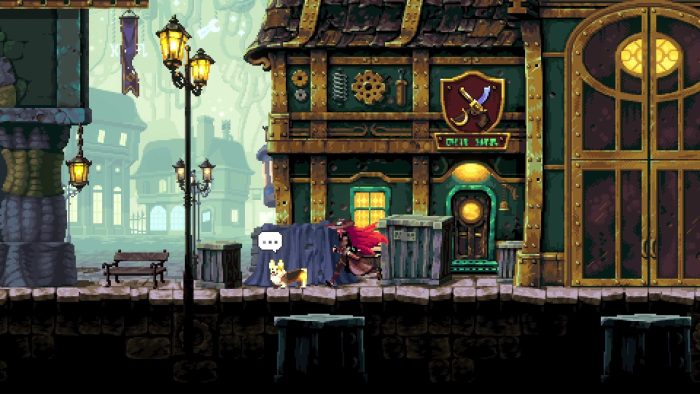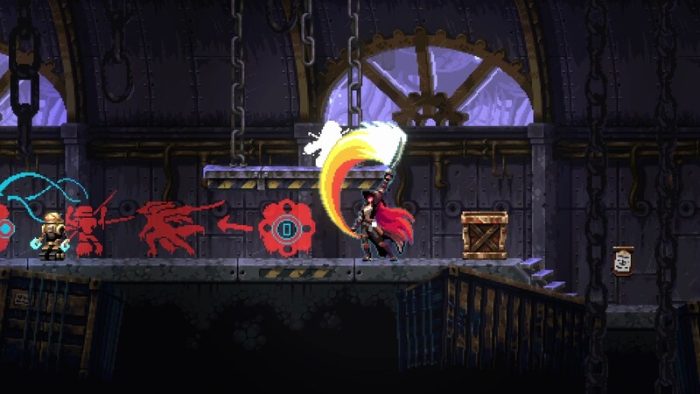A modern Metroidvania aims to bring something new to the genre
Everyone’s path of self-discovery occurs differently, but they all share the commonality of beginning with specific moments or events that spark something in that individual. Some might be driven to compete in sports after an amazing season, another to acting after watching a particular film. My path began in the mid-to-late 90s with memories of playing Legos while watching Star Trek: The Next Generation, going to the library where my mom worked and discovering the Redwall series, or playing Final Fantasy IV every year at our friend’s July 4th party. These made me into the nerd I am today, and where my passion for gaming is concerned there were two particular games that forged in me a great affinity for their respective genres: Super Metroid and Castlevania: Symphony of the Night. Together they gave rise to the Metroidvania subset of 2D-Action Platformers.
Those initial years with the genre were tough for someone who liked them so much, as there weren’t that many outside the franchises that started it. If it wasn’t for all of Nintendo’s handhelds with those specific titles I would’ve been a mess. But looking back on it now, after the oversaturation of the market due to the releases of Hollow Knight and Ori and the Blind Forest, I realized I should’ve counted my blessings. As a result of their success, a Metroidvania revival was born, but for every good game there were ten duds. In such a landscape even someone like myself can feel a sense of jadedness. And I admit, I did.
Enter: Gestalt: Steam & Cinder, a modern Metroidvania from developer Metamorphosis Games and publisher Fireshine Games that aims to capture the original feeling of those older titles. Was it the one to renew my faith in the genre or does it run out of steam?
Right off the bat something stood apparent to me concerning Gestalt, and that was its presentation. Ever since I first laid sight upon the game with its reveal trailer I was enthralled by how it seemed to perfectly replicate the heyday of Castlevania games on the GBA and Nintendo DS, but with the added cinematic flair that we’ve been seeing more in the 2D space over the years. Turbo Kid, my prior review, also did this in its own way, but here it’s done differently. The aesthetics (both visual and auditory) are consistently great. The story has a sense of gravitas, in a much more focused narrative than usually seen in the genre, and with a multitude of characters and dialogue cinematics it’s pretty engaging in the early hours, but it quickly becomes apparent there’s just too much talking and exposition. It’s not helped that the plot, set in a post-apocalyptic wasteland whose technology is run by steam and the powers of hell, becomes crazier with every passing second. It took all my willpower to not button mash through lines of speech and skim what people were saying, telling myself maybe the payoff would be worth it. Unfortunately the ending is a cheap, abrupt and disrespectful sequel bait.

The moment-to-moment gameplay, however, did help alleviate some of the concerns I had with the narrative, and kept me engaged more than I otherwise would have been. One of the most important things I look for in a 2D Metroidvania like this is the controls themselves, how it feels to move. Both platforming and combat feel great, which remains the case with each new ability added to our repertoire. Such skills are unlocked via a skill tree, though it’s as straightforward as they come, with each new node unlocked quickly diminishing any sense of challenge. I struggled with the initial bosses, but in a way that forced me to learn patterns and combat strategies; after that dying was never on the table.
Exploration itself was also quite limited, as there weren’t many optional paths to take, and when there were it never felt like it had been worth taking. This is because the game is easy enough we don’t need to care about upgrades that make our character stronger. There’s quite a few accessories and consumables to find, but one can get by without using most of them; in fact I only ever had to use two consumables (healing potions and antidotes). Pacing issues were a concern as well, as the critical paths in such zones are larger than they need to be due to fast travel opening up fairly late, and their warps placed in out of the way positions. Thankfully the game was short enough to mitigate most of that frustration. I was able to complete it to 99% in 8 hours.

For those looking for a short, straightforward Metroidvania with a high degree of polish, you can’t really go wrong with Gestalt: Steam & Cinder. There are just a few caveats to consider, such as the lack of challenge, or the dragging dialogue and bonkers story that could very well never be finished. But if one can get past those it’s a world well worth diving into, even if it might not be the revival I was hoping for.
This review is based on a Steam code sent to SideQuesting by the publisher. Images and video courtesy publisher.


No Comments